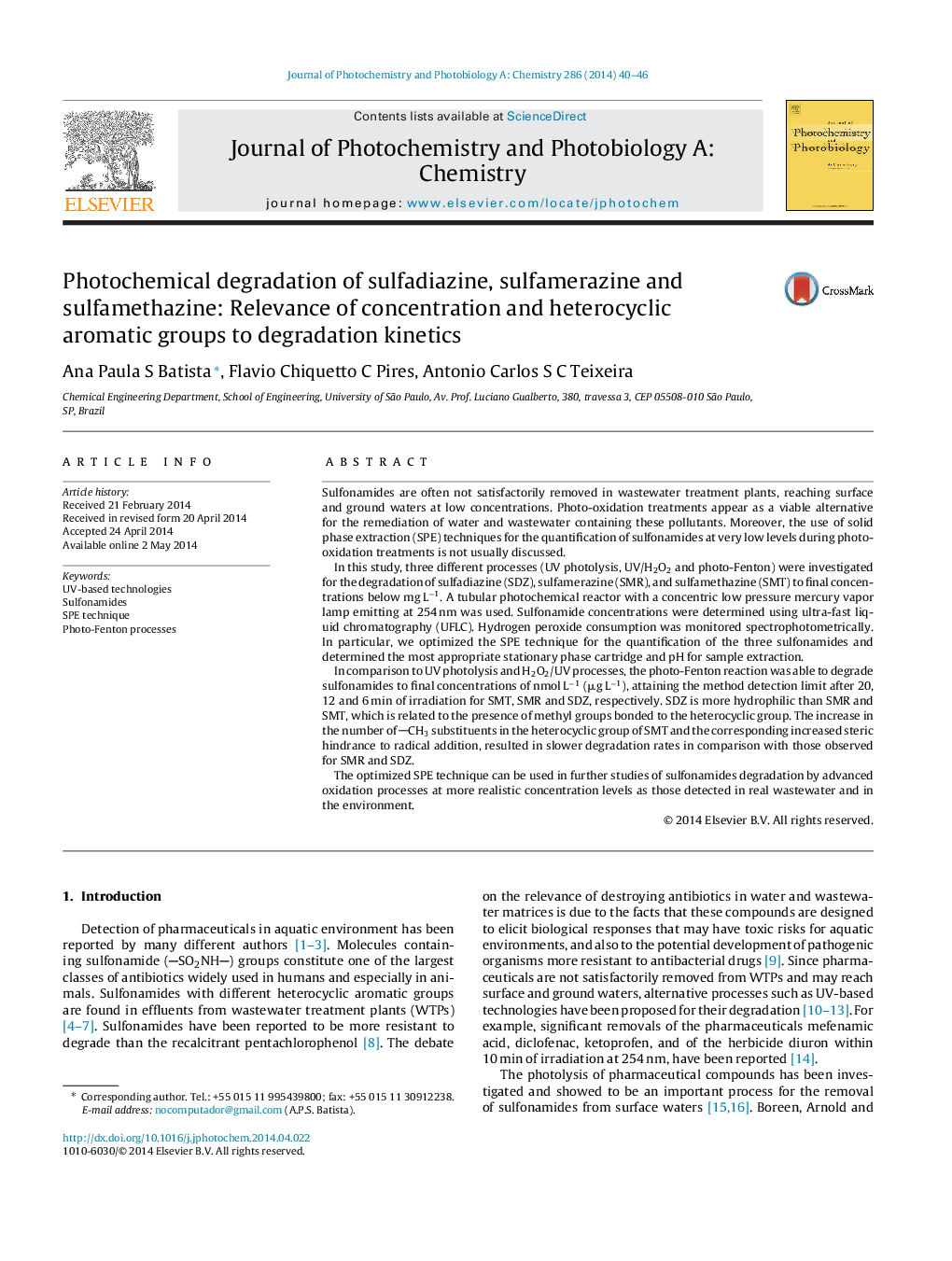| Article ID | Journal | Published Year | Pages | File Type |
|---|---|---|---|---|
| 26240 | Journal of Photochemistry and Photobiology A: Chemistry | 2014 | 7 Pages |
•Sulfonamides degradation was studied at low initial concentrations (≤0.1 mmol L−1).•The SPE–UFLC analysis was optimized for sulfonamides detection at nmol L−1 levels.•The photo-Fenton reaction enabled sulfonamides oxidation to concentrations of nmol L−1.•The R-group bonded to sulfonamide molecules influenced the degradation kinetics.
Sulfonamides are often not satisfactorily removed in wastewater treatment plants, reaching surface and ground waters at low concentrations. Photo-oxidation treatments appear as a viable alternative for the remediation of water and wastewater containing these pollutants. Moreover, the use of solid phase extraction (SPE) techniques for the quantification of sulfonamides at very low levels during photo-oxidation treatments is not usually discussed.In this study, three different processes (UV photolysis, UV/H2O2 and photo-Fenton) were investigated for the degradation of sulfadiazine (SDZ), sulfamerazine (SMR), and sulfamethazine (SMT) to final concentrations below mg L−1. A tubular photochemical reactor with a concentric low pressure mercury vapor lamp emitting at 254 nm was used. Sulfonamide concentrations were determined using ultra-fast liquid chromatography (UFLC). Hydrogen peroxide consumption was monitored spectrophotometrically. In particular, we optimized the SPE technique for the quantification of the three sulfonamides and determined the most appropriate stationary phase cartridge and pH for sample extraction.In comparison to UV photolysis and H2O2/UV processes, the photo-Fenton reaction was able to degrade sulfonamides to final concentrations of nmol L−1 (μg L−1), attaining the method detection limit after 20, 12 and 6 min of irradiation for SMT, SMR and SDZ, respectively. SDZ is more hydrophilic than SMR and SMT, which is related to the presence of methyl groups bonded to the heterocyclic group. The increase in the number of CH3 substituents in the heterocyclic group of SMT and the corresponding increased steric hindrance to radical addition, resulted in slower degradation rates in comparison with those observed for SMR and SDZ.The optimized SPE technique can be used in further studies of sulfonamides degradation by advanced oxidation processes at more realistic concentration levels as those detected in real wastewater and in the environment.
Graphical abstractFigure optionsDownload full-size imageDownload as PowerPoint slide
